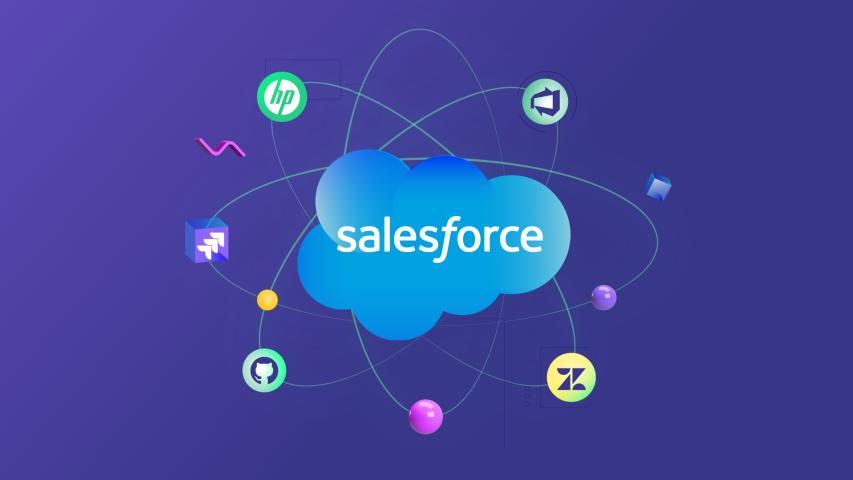In today’s fast-paced digital landscape, businesses are under increasing pressure to deliver seamless, personalized, and engaging experiences to customers, partners, and employees. Salesforce Experience Cloud, formerly known as Community Cloud, has emerged as a powerful platform to create branded digital portals, forums, and mobile apps that foster collaboration and drive engagement. However, implementing Experience Cloud effectively requires a strategic approach, expert guidance, and a clear blueprint for success. This article outlines the key steps, best practices, and benefits of Salesforce Experience Cloud implementation services, providing a comprehensive guide for businesses aiming to thrive in 2025.
Why Salesforce Experience Cloud Matters in 2025
Salesforce Experience Cloud is a versatile digital experience platform (DXP) that enables organizations to build connected, data-driven communities. Whether it’s a customer self-service portal, a partner collaboration hub, or an employee engagement platform, Experience Cloud integrates seamlessly with Salesforce’s Customer 360 ecosystem, leveraging CRM data to deliver personalized experiences. In 2025, as customer expectations for intuitive, omnichannel interactions continue to rise, Experience Cloud stands out for its:
- Intuitive Drag-and-Drop Interface: Experience Builder empowers users with minimal technical skills to create visually appealing portals using customizable templates.
- Advanced Personalization: AI-driven insights and segmentation tools deliver tailored content to specific audiences.
- Mobile Optimization: Responsive templates and Mobile Publisher ensure seamless experiences across devices.
- Robust Security: Granular access controls and data encryption protect sensitive information.
- Scalability: The platform adapts to businesses of all sizes, from startups to enterprises.
With 80% of enterprise data being unstructured, Experience Cloud’s integration with Salesforce Data Cloud enables businesses to aggregate and analyze data for real-time decision-making, making it a critical tool for 2025.
The Need for Professional Implementation Services
While Experience Cloud offers powerful features, its successful deployment requires careful planning and expertise. Many organizations lack the in-house resources or technical know-how to navigate the complexities of implementation, such as configuring Lightning Components, integrating third-party systems, or ensuring scalability. This is where Salesforce Experience Cloud implementation services come in. Partnering with certified consultants ensures a tailored solution that aligns with your business goals, minimizes risks, and maximizes ROI.
Professional implementation services offer:
- Strategic Planning: Defining objectives and mapping out user journeys.
- Custom Development: Building branded portals with custom Lightning Components and Visualforce pages.
- Seamless Integration: Connecting Experience Cloud with Salesforce clouds (e.g., Sales, Service) and external systems.
- Training and Support: Equipping teams with the skills to manage and optimize the platform.
- Ongoing Optimization: Monitoring KPIs and refining configurations for continuous improvement.
Your 2025 Success Blueprint: Key Steps for Implementation
To achieve a successful Salesforce Experience Cloud implementation in 2025, businesses should follow a structured blueprint. Below are the essential steps, informed by industry best practices and expert insights.
1. Define Clear Objectives and KPIs
The foundation of any successful implementation is a clear understanding of what you want to achieve. Are you building a customer support portal to reduce ticket resolution times? A partner hub to streamline collaboration? Or an employee portal to enhance internal communication? Engage stakeholders—executives, IT teams, and end-users—to align on goals.
Key Actions:
- Identify pain points, such as unoptimized navigation or lack of personalization.
- Set measurable KPIs, such as a 30% reduction in support ticket resolution time or a 25% increase in user engagement.
- Document requirements, including content needs, design preferences, and integration points.
Example: A financial services firm used Experience Cloud to create a partner portal, setting a KPI to reduce deal friction by 20%. By integrating AI-driven insights, they achieved real-time collaboration and boosted deal closures.
2. Choose the Right Implementation Partner
Selecting a certified Salesforce partner is critical to navigating the platform’s complexities. Look for partners with:
- A proven track record in Experience Cloud projects across your industry.
- Certified professionals with expertise in Lightning Components and Apex development.
- A customer-centric approach, offering tailored solutions and ongoing support.
Partners like Melonleaf Consulting, DemandBlue, Ascendix, or Kizzy Consulting provide end-to-end services, from setup to post-launch optimization, ensuring a seamless implementation.
3. Plan Content and User Experience
Content is the backbone of any Experience Cloud portal. Plan the structure, navigation, and content types (e.g., knowledge articles, forums, or dashboards) to meet user needs. Leverage Experience Builder’s drag-and-drop interface to design intuitive, branded interfaces.
Best Practices:
- Use prebuilt templates for quick deployment or customize them for industry-specific needs (e.g., healthcare or retail).
- Incorporate gamification features like badges and leaderboards to boost engagement.
- Ensure responsive design for mobile users, as 52% of users disengage due to poor mobile experiences.
4. Configure and Customize
Set up Experience Cloud by enabling Digital Experiences in Salesforce Setup, selecting a domain name, and configuring branding settings. Customize the platform using:
- Lightning Components: Add prebuilt or custom components for forms, search bars, or dashboards.
- Salesforce CMS: Manage content dynamically across portals.
- Chatter: Enable collaboration through feeds and groups.
For advanced functionality, integrate AI-powered chatbots (e.g., via Dialogflow) or third-party systems like HubSpot for unified data views.
5. Implement Security and Access Controls
Protect sensitive data by configuring roles, permissions, and sharing rules. Use Salesforce’s robust security features to:
- Restrict access based on user profiles (e.g., customers vs. partners).
- Encrypt data to comply with regulations like GDPR or CCPA.
- Conduct regular security audits to identify vulnerabilities.
6. Test and Validate
Thorough testing ensures a smooth launch. Conduct functional, user acceptance (UAT), and security testing to verify:
- Navigation and usability across devices.
- Integration with Salesforce and external systems.
- Performance under high user loads.
7. Train Users and Launch
Prepare end-users with comprehensive training on portal features and workflows. Use Salesforce Trailhead for self-paced learning or partner-led workshops. Execute a phased rollout to minimize disruptions, starting with a pilot group before scaling to all users.
8. Monitor and Optimize
Post-launch, track KPIs using Salesforce dashboards and reports. Gather feedback from users to identify areas for improvement. Regularly update configurations to align with evolving business needs, leveraging Einstein AI for predictive insights.
Benefits of a Successful Implementation
A well-executed Experience Cloud implementation delivers transformative benefits:
- Enhanced Engagement: Personalized portals increase customer retention by 30% and boost partner collaboration.
- Operational Efficiency: Self-service portals reduce support costs by 25% and improve agent productivity.
- Data-Driven Insights: Integration with Data Cloud provides a 360-degree view of users, enabling precise targeting.
- Scalability: The platform grows with your business, supporting new features and integrations.
- Brand Loyalty: Branded, seamless experiences foster trust and advocacy.
Case Study: Real-World Success
A leading retail company partnered with Growth Natives to implement a customer self-service portal using Experience Cloud. By integrating Sales and Service Clouds, they achieved a unified view of customer interactions, reducing resolution times by 40%. The portal’s gamification features increased user engagement by 35%, and mobile optimization led to a 20% uptick in mobile user retention.
Choosing the Right Partner in 2025
In 2025, selecting the right implementation partner is more critical than ever. Look for partners with:
- Industry Expertise: Experience in your sector (e.g., retail, finance, or healthcare).
- Innovative Solutions: Use of AI, automation, and modern UX design.
- Flexible Pricing Models: Pay-as-you-use or subscription-based options.
Firms like Melonleaf Consulting, with over 5 years of Salesforce expertise, or TechForce Services, a global Summit partner, offer tailored solutions to maximize your investment.
Conclusion
Salesforce Experience Cloud is a game-changer for businesses seeking to deliver connected, engaging digital experiences in 2025. However, its success hinges on a strategic implementation that aligns with your goals, leverages expert services, and follows a clear blueprint. By defining objectives, partnering with certified consultants, and prioritizing user experience, businesses can unlock the platform’s full potential, driving engagement, efficiency, and growth. As the digital landscape evolves, investing in Salesforce Experience Cloud implementation services is not just a strategy—it’s your blueprint for sustained success.














